- Administrator
- Albums and Singles
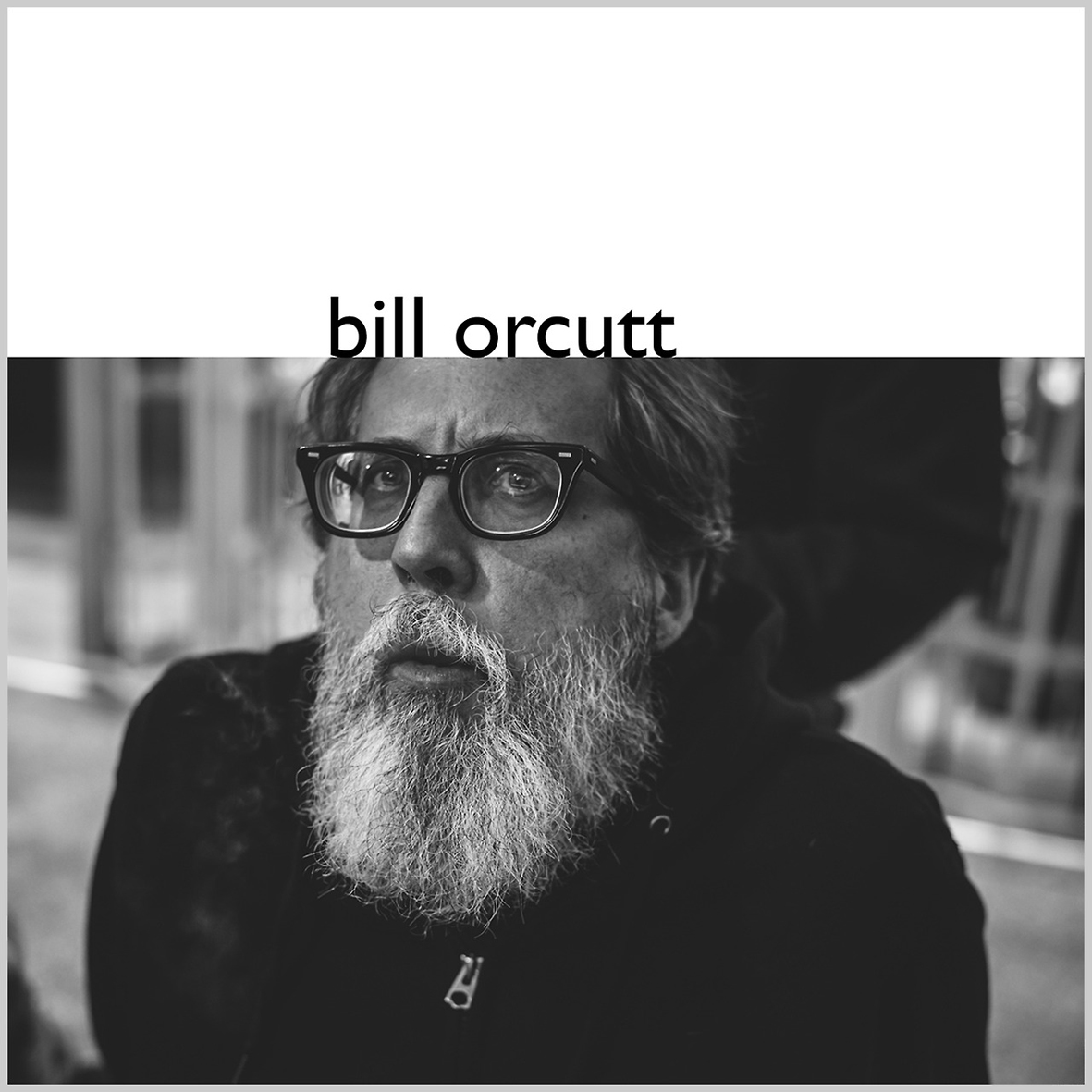 Like many, I picked up Bill Orcutt's self-released solo guitar debut (New Ways to Pay Old Debts) back in 2009 and was completely floored by its idiosyncratic primitivism.  There was nothing on earth quite like it, as it captured visionary art in its rawest, purist form: Orcutt was a virtuosic dervish violently attacking a four-string acoustic guitar, howling and moaning along when the mood struck him.  It sounded positively feral.  It also sounded like it was composed spontaneously and recorded into a boom box (it was even periodically disrupted by ringing phones and passing trucks).  In a perverse way, it was almost too perfect–I never got around to picking up any of Orcutt's follow-ups on Editions Mego because it seemed like there was nowhere to go from the demonic possession supernova of his first salvo.  As it turns out, I was wrong about that, as Orcutt has spent the ensuing years moving in a more melodic direction.  This latest release is a culmination of that evolution, as Orcutt picked up an electric guitar, headed to an actual studio, and recorded a suite of originals and standards.  If that sounds tame, it is not: Orcutt's biting and percussive renditions of chestnuts like "When You Wish Upon A Star" are every bit as explosive as I would want them to be, but the (slightly) stronger emphasis on melody goes a long way towards making Orcutt's vision a bit more conducive to repeat listening.
Like many, I picked up Bill Orcutt's self-released solo guitar debut (New Ways to Pay Old Debts) back in 2009 and was completely floored by its idiosyncratic primitivism.  There was nothing on earth quite like it, as it captured visionary art in its rawest, purist form: Orcutt was a virtuosic dervish violently attacking a four-string acoustic guitar, howling and moaning along when the mood struck him.  It sounded positively feral.  It also sounded like it was composed spontaneously and recorded into a boom box (it was even periodically disrupted by ringing phones and passing trucks).  In a perverse way, it was almost too perfect–I never got around to picking up any of Orcutt's follow-ups on Editions Mego because it seemed like there was nowhere to go from the demonic possession supernova of his first salvo.  As it turns out, I was wrong about that, as Orcutt has spent the ensuing years moving in a more melodic direction.  This latest release is a culmination of that evolution, as Orcutt picked up an electric guitar, headed to an actual studio, and recorded a suite of originals and standards.  If that sounds tame, it is not: Orcutt's biting and percussive renditions of chestnuts like "When You Wish Upon A Star" are every bit as explosive as I would want them to be, but the (slightly) stronger emphasis on melody goes a long way towards making Orcutt's vision a bit more conducive to repeat listening.
It is not hyperbole to describe Orcutt’s solo guitar style as unique, as he often sounds like he is clawing and snapping at the strings in a white-hot rage, unleashing sharp and disjointed flurries of notes.  In fact, he often sounds a hell of a lot more like a free-jazz saxophonist than a guitarist in his approach, though his chosen weapon provides a percussive, visceral bite rather than a primal howl.  Remarkably, Orcutt already had quite a distinctive and influential style back in his days with Harry Pussy, but his solo career sounds he went to hell and back in the interim and returned as a completely transformed artist.  Obviously, the thread linking the two eras is that Orcutt is quite noisy and averse to conventional chords and melodies (understandable, since his guitar is still missing two strings), but Orcutt's solo work is intense and intimate on an entirely different level.  On this album, however, some fragmented melodies do manage to dance and dart through the pointillist storms of notes, particularly in the opening "Lonely Woman." It is apparently based upon the Ornette Coleman piece, but it seems to have just as much in common with Horace Silver's noirish torch song and Orcutt comes closer to meeting the latter halfway, weaving a slow-moving, melancholy melody with plenty of soulful vibrato. It even sustains a kind of perverse beauty and dignity when it erupts in flurries of wild pull-offs, tremolo picking, jarring chords, and violently snapping notes, which is not true of some of the other standards here. For example, I would have a very hard time recognizing "Star Spangled Banner" in the squall of sharp twangs and vibrato-heavy double-stops of Orcutt's version if I did not already know the song title.  The same is quite true of "When You Wish Upon A Star."
It is an interesting choice that Orcutt devotes so much of the album to feel-good songs with immediately recognizable melodies, since he generally transfigures them into something unrecognizably ecstatic and visceral.  There are even two Christmas songs, one of which (a brief rendition of "White Christmas") stands as one of the Bill Orcutt's legitimate highlights, as snatches of the melody keep unexpectedly bursting forth from an otherwise blues-y reverie.  It is one of the more tender and nuanced pieces in this suite and beautifully highlights Orcutt's genius for making individual notes cut through the clangor and feel meaningful.  Elsewhere, Orcutt's meditative interpretation of "Somewhere Over the Rainbow" is another beautiful stand-out, hewing quite close to the melody in a way that feels movingly wounded and precarious.
Orcutt’s sole new original piece, "The World Without Me," is also quite beautiful, as he seems to treat his own melodies with a bit more reverence than he does elsewhere.  In fact, "The World Without Me" actually feels like the perfect distillation of Orcutt's aesthetic, as it is fundamentally a warm, languorous, and lyrical piece that only erupts into scrabbling flurries of notes for emphasis (as opposed to a frenzied, twanging cacophony with occasional glimpses of melody).  Orcutt's other original ("O Platitudes!" from his VDSQ album) is quite fine as well, resembling an electrified homage to classic bottleneck blues that periodically veers off the rails into gnarled and twanging crescendos of frenzied picking.  The line between standards and originals is amusingly blurry and almost completely irrelevant throughout the album, as the originals feel like standards and the standards are frequently fragmented into unrecognizability.  I imagine it all just depends on which melody Orcutt was idly playing around with before a piece began to take shape into a fully formed tour de force.
Uncharacteristically, I cannot find any flaws at all with this album, as it is the most accessible version of Orcutt's brilliance that he possibly could have made without sacrificing anything important (though I do admittedly prefer the sharper attack of his acoustic guitar).  The clear production and the absence of Orcutt's strange and wordless vocalizing does not so much soften his sound as merely clear away any possible distractions from the volcanic display of four-stringed virtuosity taking place. Also, Orcutt's increasing emphasis on melody provides a welcome grounding for his more outré displays: I certainly love the noisy bits, but they are always better and more meaningful when they emerge from an oasis of comparative musicality.  This is simply a great album from start to finish.  I am sure I overuse the word "visionary," but it is entirely warranted to say that Bill Orcutt is a goddamn visionary who deserves every bit as much reverence as John Fahey.  Granted, Fahey's legacy is far more influential than Orcutt's will ever be, but the two artists have a similarly radical and anachronistic body of work.  The main difference is merely that Fahey's backward-looking American Primitivism spawned plenty of imitators while Orcutt’s razor-edged brutalism is unlikely to spawn any descendants at all, as it presents an absolutely impossible act to follow.
 
Read More
- Administrator
- Albums and Singles
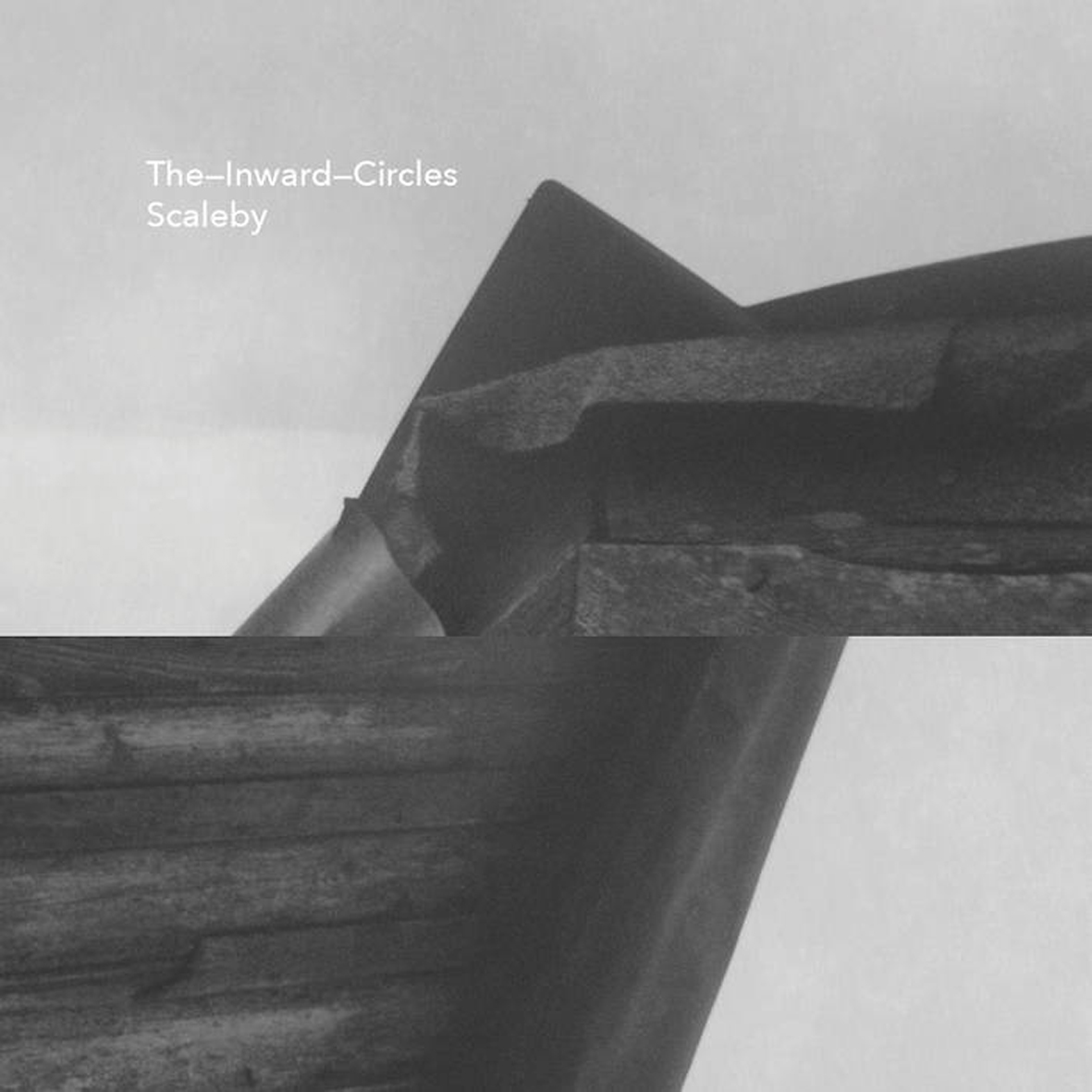 This digital-only sister release to And Right Lines Limit and Close All Bodies is a suite of comparatively simple, warm, and straightforward drone pieces, which presumably explains why its companion warranted a physical release while Scaleby did not.  That lack of fanfare makes sense, as Right Lines Limit is a far more complex and ambitious work that expands the limits of Skelton's vision while this release is merely nine variations on a theme firmly within his comfort zone.  I happen to be quite fond of that comfort zone though, as these bleary, churning reveries play much more to Skelton's strengths than some of his more cosmic, universe-chewing excursions of late.  While the recurring Inward Circles' theme of obfuscation is still in full effect (there are no recognizable stringed instruments to be found), Scaleby nonetheless carves out its own lovely niche of languorously vaporous, dreamlike beauty beneath a patina of shifting crackle, grit, and hiss.
This digital-only sister release to And Right Lines Limit and Close All Bodies is a suite of comparatively simple, warm, and straightforward drone pieces, which presumably explains why its companion warranted a physical release while Scaleby did not.  That lack of fanfare makes sense, as Right Lines Limit is a far more complex and ambitious work that expands the limits of Skelton's vision while this release is merely nine variations on a theme firmly within his comfort zone.  I happen to be quite fond of that comfort zone though, as these bleary, churning reveries play much more to Skelton's strengths than some of his more cosmic, universe-chewing excursions of late.  While the recurring Inward Circles' theme of obfuscation is still in full effect (there are no recognizable stringed instruments to be found), Scaleby nonetheless carves out its own lovely niche of languorously vaporous, dreamlike beauty beneath a patina of shifting crackle, grit, and hiss.
Scaleby takes its title and inspiration from one of Skelton’s favorite subjects: a body found in a bog.  This particular one was clad in deer skin and was found in the small parish of Scaleby in Skelton's beloved Cumbria.  I am uncertain how great a role our stylish bog-friend may have directly played in the shaping of the actual music here, but Scaleby gamely continues The Inward Circles' fascination with the themes of burial, decay, and transformation.  In more practical terms, the consistent thread that runs throughout the album is that of gently undulating and blurred synth-like drones, though those drones undergo varying degrees of decay and disruption.  Presumably, those tones were originally produced using bowed strings or something similarly organic, but they have since been smeared and smoothed into soft-focus unrecognizability.  On early pieces, such as the brief "Scaleby, I," Skelton leaves their placid languor relatively unmolested, which results in an aesthetic not unlike a gently rippling pool of murky, viscous liquid.  Later, that changes quite a bit, imbuing Scaleby with a mysterious and deepening arc.  Obviously, parallels to an actual bog are unavoidable here, as Scaleby feels like a slow descent from the surface to the depths, unlocking some dark and long-buried secrets along the way.  To his credit, Skelton employs a light touch in that endeavor, avoiding bombast or gloom and instead allowing the darkness to gradually creep in as increasingly corrosive textures obscure and fray the central motif.
Given that arc, it takes a few songs before Scaleby begins to develop into something more substantial.  That transition starts to become evident with "Scaleby, III," as Skelton’s calm, slow-moving drones are veiled behind a sizzling and blown-out-sounding harmonic cloud.  The equally brief following piece performs a similar bit of alchemy, gnawing at the edges of the hazy idyll with a shifting snarl of crackle and hiss.  That said, it is not until the album’s halfway point ("Scaleby, V") that Skelton truly begins to stretch out and shape his main theme into something deeper and heavier, as the calmly submerged thrum disappears completely to make room for an oscillating and metallic swirl of uneasily harmonizing overtones.  That largely sets the tone for the remainder of the album, as the four successive pieces are similarly gnarled and shadowy variations, ranging from murky throbbing ("Scaleby, VI") to heavenly chords swathed in pulsing static ("Scaleby, VII") to a dense and shimmering fog propelled by a heavy rhythmic undercurrent of rumble and hiss ("Scaleby, VIII").  Curiously, that descent into darker and darker waters arguably comes to an end with the closing centerpiece, "Scaleby, IX."  Rather than being more extreme than what came before, it instead feels like Scaleby’s recurring central motif is finally given a chance to stretch out and blossom into an immersive, fully formed soundworld (rather than just providing a fleeting glimpse of one).  While Skelton admittedly does not have any grand statement hidden up his sleeve for the finale, Scaleby's final act is nevertheless a satisfying coda of blearily melancholy arpeggios and gently swaying ambience viscerally ravaged by harshly grinding metallic textures.
Naturally, Scaleby has some arguable shortcomings, but they are largely a matter of perspective and somewhat inherent in what Skelton is trying to do here.  For example, a lot of these songs are quite brief and blur together due to their thematic similarity and constrained palette.  If Scaleby were billed as a major artistic statement, I suppose that would be problematic for me, but it is perfectly fine for a modest, digital-only extended fantasia on a single theme.  In fact, I quite like it.  While it may be a minor release, it is a well-executed and appealingly unusual drone album, as well as a very listenable, complete, and compact vision.  Anyone hoping for another dose of The Inward Circles' recent crushing epics of element force can probably give this one a pass, but most fans will likely find Scaleby to be an absorbing, simple, and pure oasis from Skelton's more challenging and expansive fare.
 
Read More
- Administrator
- Albums and Singles
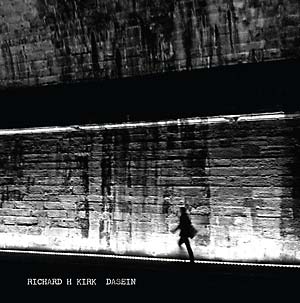
Read More
- Administrator
- Albums and Singles
The newly remastered Allegory & Self and Pagan Day are split releases by Sacred Bones and Dais Records. A limited edition bundle includes Allegory & Self on white vinyl and Pagan Day on red vinyl, as well as an a 11" x 17" folded risograph printed Psychic TV poster, exclusive to the bundle.
Beginning in 1982, the conceptual audiovisual troupe labeled Psychic TV set out on a multimedia journey filled with subversion, liberation and rebellion. While the members’ previous works took root in the counterculture zeitgeist of late '70s UK punk and conceptual art, it was no longer a question of how to rebel against authority, but rather how to carefully subvert it through collective infiltration. Parallel to Psychic TV, its members formed the anti-cult faction Thee Temple of Psychick Youth, further propagating the Psychic TV message and vision.

While the ensuing years saw Psychic TV’s major label infection and record breaking live album release binge, it wasn’t until 1988 that the band started to ready itself for a chart-friendly pop endeavor in the form of Allegory & Self. This would be the band’s most notable and successful endeavor but tragically, it would be the final songwriting collaboration between P-Orridge and Fergusson. Allegory & Self was a perfect storm of catchy pop melody along with subversive counter-culture reference and occult leanings, packaged in a perfect bundle of underground hits.

Shortly before Christmas 1984, the core songwriters, Genesis P-Orridge and Alex Fergusson, of underground arts collective Psychic TV quietly released a limited edition record containing sketches and ideas for songs. Some songs would become later fully-realized arrangements, some abandoned and others were just covered in praise of their creator. The record, in recognition of its seasonal release, was simply titled A Pagan Day and would capture the intimate songwriting sessions that were prevalent during crucial time in the band’s career.
In classic Psychic TV fashion, rumors and myths surround the album’s creation. Most have suggested that it was recorded in a single session over a cup of coffee on a lone 4-track cassette recorder above an old YMCA building in London, though later revealed that the recordings were from various sessions over the course of a couple years prior to the record’s release. After quickly pressing the songs to vinyl, the record was originally only available through Rough Trade for a few hours on December 23, 1984 and pressed on picture discs, which adorned a photo of P-Orridge’s first born, Caresse, in exactly 999 copies.
Read More
- Administrator
- Albums and Singles
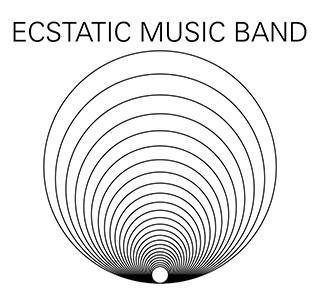 While this latest album from the 10 person collective may feature only three of its members (Ezra Buchla, John Krausbauer, and Agnes Szelag, recorded in 2012), that reduced personnel is hardly perceptible from the sound. The subset trio create an unbroken noise squall of over 40 minutes that channels the best of truly minimalist compositions while at the same time it is reminiscent of the most chaotic (and therefore most amazing) of psych rock freakouts.
While this latest album from the 10 person collective may feature only three of its members (Ezra Buchla, John Krausbauer, and Agnes Szelag, recorded in 2012), that reduced personnel is hardly perceptible from the sound. The subset trio create an unbroken noise squall of over 40 minutes that channels the best of truly minimalist compositions while at the same time it is reminiscent of the most chaotic (and therefore most amazing) of psych rock freakouts.
Approaching the Infinite is not just a title but also essentially a statement of purpose for the record.In a single unbroken performance, the trio strive for a distinctly maximalist sound, even if from a compositional standpoint there is a greater adherence to the minimalist school of structure.Liner notes are scant, other than the band roster, so the instrumentation is somewhat ambiguous.However, I think it is pretty clear that squalling, aggressive guitar is the source of the beautiful racket that makes up this album.
The guitar sounds are multilayered and diverse, but they all have an intentionally ugly sheen of distortion to them.The layers intersect brilliantly, clashing with the right amount of noise and distortion to hit all the right buttons, but to never devolve into purely harsh noise murk."Drone" is an overused term, I am well aware, but it fits this band’s ethos well from a structural view.EMB is all about big, sustained squalls of guitar that stretch out and expand to, well, infinity.
There is an intentional repetition to Approaching the Infinite, but there are a number of seemingly minute changes that result in a much greater sense of evolution and development.Some of the layers almost take on a rhythmic quality, but more in the sense of looping/delayed passages as opposed to anything percussive.The multitracked noise results in a great paring of the ugliness of distortion and feedback, while still allowing the more beautiful, purely tonal sounds to appear as well.
If I needed to boil the sound of this record down to the most basic of descriptors though, the most specific reference I can conjure is the traditional feedback and noise that opens or closes a many a great space/psych rock song, but harnessed and stretched out for an intense 40 minutes.All the harshness and beauty that is usually contained into those few seconds is here, expanded massively.The audacity of listening to such a massive wall of noise can be imposing, but the way the Ecstatic Music Band brings it all together results in a much more stunning experience on Approaching the Infinite.
samples:
 
Read More
- Administrator
- Albums and Singles
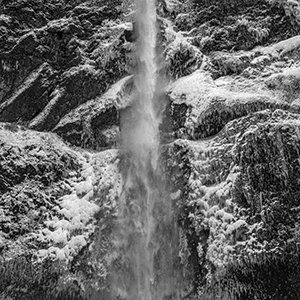 Daniel Menche's latest work is a bit daunting on paper: a three disc, three-plus hour work of 12 pieces, ranging between 10 and 25 minutes each. However, this is not the Menche of old, who was an adherent to that old school noise blast mentality that was so heavily the focus in the early days of the noise scene. Instead, there is rich variation and diversity on Sleeper, and the range of moods he creates is fitting the somnial implications of title, capturing the soundtrack to the most pleasant of dreams to the most terrifying of nightmares.
Daniel Menche's latest work is a bit daunting on paper: a three disc, three-plus hour work of 12 pieces, ranging between 10 and 25 minutes each. However, this is not the Menche of old, who was an adherent to that old school noise blast mentality that was so heavily the focus in the early days of the noise scene. Instead, there is rich variation and diversity on Sleeper, and the range of moods he creates is fitting the somnial implications of title, capturing the soundtrack to the most pleasant of dreams to the most terrifying of nightmares.
The initial most striking part of Sleeper is the complexity of the mixing and sound design that Menche pulls together.For someone usually associated with harsh noise, his ear for subtle development and varying frequencies is immediately apparent.This is not a new phenomenon:even Menche's harshest works were the product of devotion to sonic perfection.Right from the start of "Sleeper I," he constructs this massive, flickering wall that is imposing, yet comprised of glorious and regal sounding tones.Blended with a heavy undercurrent that gives a comfortable rumble, there is a lot of variation despite its monolithic structure.
The following piece keeps a thunderous pulse to it, but the overall sense is more elongated and expansive.The composition is slower and darker, with sinister electronic buzzing and metal percussion creating a tense, daunting atmosphere that builds up to a heavy crescendo and then stops nicely.Dark harshness also abounds on "Sleeper VIII," an instantaneous collage of distortion and low, rumbling feedback that in some ways calls back to his work from two decades prior.Loops that almost resemble old computer data cassettes buzz about and he brings it all together with an oddly light, ambient sound around the whole mess that builds to a chaotic, amazing conclusion.
Other moments of Sleeper feature Menche creating a backdrop for more pleasant dreams.For example, "Sleeper V" is a swirling mass of alien metallic tones and noises that never become too distorted.There is still a daunting depth to the sound, but it is a lighter sounding mood overall."Sleeper IV" stands out with Menche constructing the piece around a two-note organ pattern that, while he adds a healthy amount of noise to the piece, stays grounded in a more peaceful sensibility.Shimmering chime-like tones also envelope the less dynamic "Sleeper XI" that, even with a bit of rather heavy bass rumble is a pleasant sounding work.
The lengthy conclusion, "Sleeper XII," is the perfect culmination of the set.Over the nearly 26 minute work, Menche first blends heavy low end tones with less jarring ones, blending layer with layer to take on the entire sonic spectrum of possible sound.From there he does a push/pull strategy with the sound, alternating between lifting the piece up to heavenly beauty, then pulling down to frightening, hellish infernos.It is like an entire nights dreaming compiled together into a single bit of sound, with all the pleasantness and foreboding that can bring.
Even clocking in at over three hours, Sleeper is a consistently gripping piece of art.Never able to fall into the background, these 12 pieces command attention from beginning to end, and the images they conjure are amazing. Daniel Menche has always been a rather prolific artist, but never has any of his works seem superfluous.Sleeper, is, however, a masterwork from an undisputed legend of noise.
samples:
 
Read More
- Administrator
- Albums and Singles
 Svendsen's most recent work has been either in the form of concept-heavy improvised jazz performances (as Nakama) or as solo excursions that feature him bending his double bass in any possible way to make sounds the inventor never intended. Compared to that, Avin is a drastic departure. What is so drastic is that, with a cadre of Norwegian virtuosos, he has created a significantly more intimate, singer-songwriter type record that maintains his edge for the bizarre and experimentation, which is superficially "normal" but hides much strangeness.
Svendsen's most recent work has been either in the form of concept-heavy improvised jazz performances (as Nakama) or as solo excursions that feature him bending his double bass in any possible way to make sounds the inventor never intended. Compared to that, Avin is a drastic departure. What is so drastic is that, with a cadre of Norwegian virtuosos, he has created a significantly more intimate, singer-songwriter type record that maintains his edge for the bizarre and experimentation, which is superficially "normal" but hides much strangeness.
Besides the total genre flip, one thing that sets the stage for Avin's sonic departure is Svendsen's abandonment of his double bass and picking up a guitar.His vocals, which are not often heard elsewhere, have a pleasant, slightly folksy tinge to them that is pleasant (though being fully in Norwegian, I have no idea what he is actually saying).At other times he takes on a spoken word approach, such as on the opening of "Kretsløp", and the brief interlude "Katarsis", but there is more singing to be had, and it is quite enjoyable.His echoing vocals have a folk quality to them, intimate, as the sound is a complex intermingling of drones and unconventional noises, such as through the complex "Da Du Og Jeg Var Vi". The arrangement and overall sound is extremely nuanced and complex, but the sum of these strange parts is a pleasurable, pop oriented sound.
For "11 Dager," Svendsen and Agnes Hvizdalek pair up to augment a gentle, pleasant sounding arrangement with their differing vocal ranges.The remainder of the octet provides a lush, diverse instrumental backing, with a bit of noise offsetting the conventional sounds far in the background.This mix of the weird with the normal is a defining feature of this record, and probably what makes it the most compelling to me.For example, "Avin" is a delicate construction of chamber pop and muted horns, making for a warm, inviting sound, but there is just something "off" about it.Either the mix or the processing or the performance, it is hard to say, but that weirdness is what makes it great.
More conventional string arrangements may at first be the focus of "Kretsløp," but some decidedly unconventional string sounds pop up to make things strange, as does bizarre vocal treatments toward the end, which becomes a stuttering, cut up, and eventually disintegrating mass of sound.For "I Berlin", the sound is more of a conventional jazz one that hearkens to Svendsen’s more conventional works with Nakama, but abrupt outbursts make it anything but smooth.The concluding "Tørr Og Sliten Jord" is at first a strange mass of noises but soon becomes stripped down to just vocals and guitar.As it goes on, the mix becomes bigger and more dramatic, culminating in an exceptional conclusion.
Christian Meaas Svendsen has been doing an exemplary job at bending the rules of improvised jazz and free music, and so there is little surprise that, turning his focus to more traditional genres, the results are going to be unique.Avin can be confounding at times, which is exactly why I enjoyed it so much.The blend of the familiar and comfortable with the strange or the dissonant is a significant asset to the record, making it among the most unique I have heard lately.
samples:
 
Read More
- Administrator
- Albums and Singles
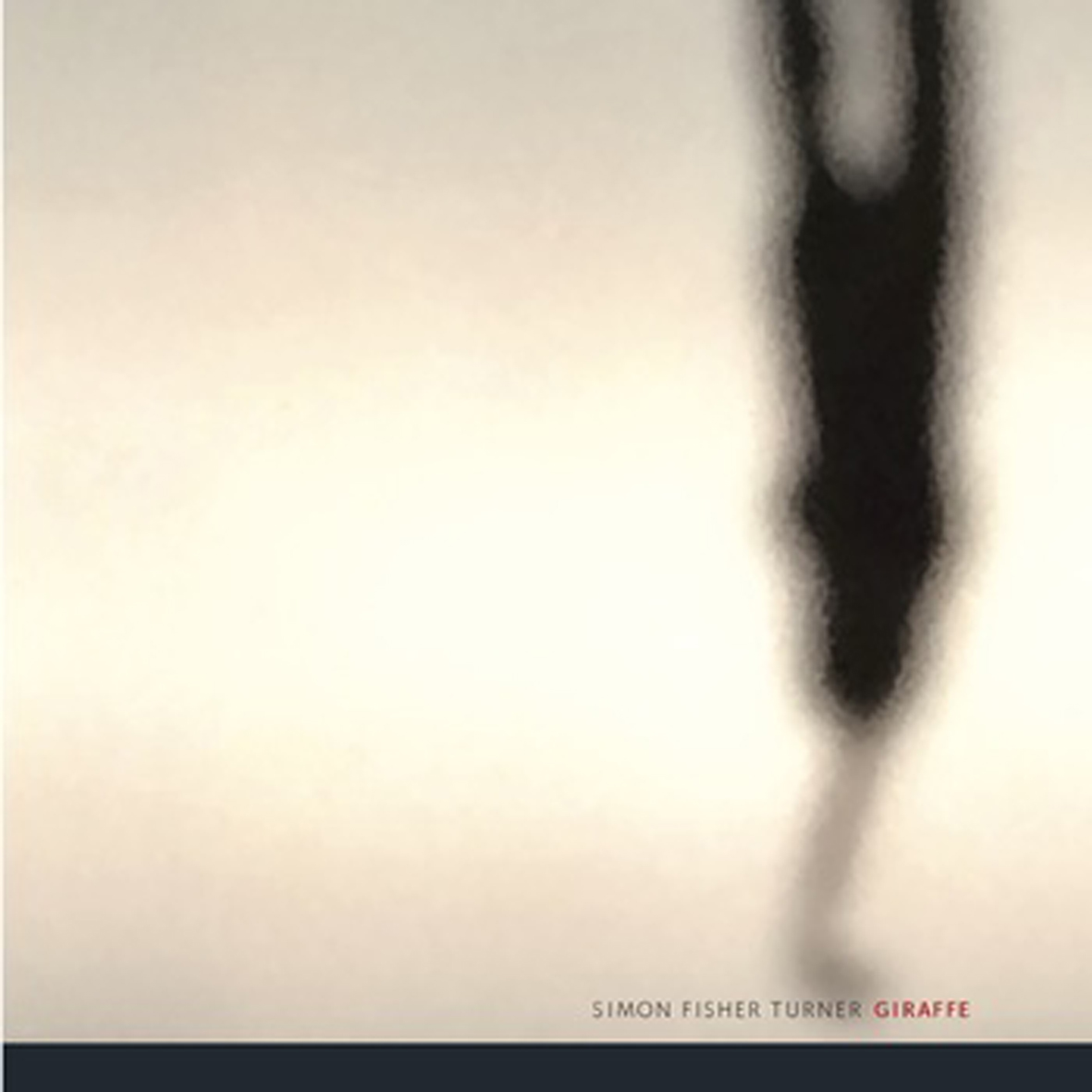 For his Editions Mego debut, the singular and polymorphously creative Simon Fisher Turner takes a break from his soundtrack career for a feast of smaller and more experimental works.  While the fourteen individual pieces of Giraffe are thematically united by an overarching concept regarding the blending of "life" sounds with music and machines, that concept allows for quite a wide variety of moods and textures.  The clear centerpiece is a gorgeously woozy soundscape ("Slight Smile") featuring a mysterious monologue from Emma Smith that ultimately turns creepily garbled and digitized, but a few other pieces are similarly inspired.  Though many individual pieces err a bit too much on the side of brevity, Giraffe as a whole is quite an absorbing work, languorously flowing from one mysterious and surreal scene to another with occasional unexpected detours into demented chaos, menacing industrial clangor, and lush Romanticism.
For his Editions Mego debut, the singular and polymorphously creative Simon Fisher Turner takes a break from his soundtrack career for a feast of smaller and more experimental works.  While the fourteen individual pieces of Giraffe are thematically united by an overarching concept regarding the blending of "life" sounds with music and machines, that concept allows for quite a wide variety of moods and textures.  The clear centerpiece is a gorgeously woozy soundscape ("Slight Smile") featuring a mysterious monologue from Emma Smith that ultimately turns creepily garbled and digitized, but a few other pieces are similarly inspired.  Though many individual pieces err a bit too much on the side of brevity, Giraffe as a whole is quite an absorbing work, languorously flowing from one mysterious and surreal scene to another with occasional unexpected detours into demented chaos, menacing industrial clangor, and lush Romanticism.
Knowingly or not, Simon Fisher Turner started collecting inspiration and raw material for Giraffe all the way back in 2008, dutifully recording the world around him with an mp3 recorder and his iPhone whenever promising opportunities arose.  Many of the field recordings were taken around venues in England and Japan, but Simon also covered Germany, Spain, and Portugal.  He seems particularly fond of voices and ambient sounds from interiors and other urban spaces.  In a few cases, the recordings are compelling enough to take center stage, such as the quietly singing woman in "Shine Up" or the jabbering meltdown/performance art of "Clean Page," but most of Giraffe’s field recordings are quite cryptic, understated, and textural, primarily serving to provide a vague sense of place rather than a strong central theme.  There are some exceptions though, with the aforementioned and unhinged "Clean Page" being the most significant of all.  Elsewhere, "Burnt In" largely eschews music entirely, featuring a recording of "Mumbai night dogs" by Avjit Mukul Kishore that gradually morphs into something that sounds like a futuristic elevator.  Later on the album, "Mud Larks" takes similarly music-averse stance, resembling a relatively untreated field recording of a reverberant and dripping parking garage with some distant construction.
Simon Fisher Turner is not Chris Watson though, so most of Giraffe's field recordings are merely one minor layer of a composed, melodic work or a somewhat unexpected foray into heavy industrial experimentation.  Given his long background in composing for film, it is not surprising that the bulk of Simon's pieces are incidental ambient works that create a vivid mood.  At its core, Giraffe is essentially a dream-like sequence of mysterious or beautiful "scenes" that leave fleeting emotional impressions.  Sometimes the scene can be quite a conventionally pretty one, like the bleary, gently ringing bliss of "Hope Swims," even if it is disconcertingly curdled by an unexpected power drill near the end.  The warm and ghostly "Clean Page" takes an even more perverse trajectory, as its blurred and heavenly reverie is unnervingly destroyed by the incomprehensible sputtering and grunting of a very agitated man.  Curiously, the album's strongest piece (the gorgeously dream-like "Slight Smile") is one of the only ones that does not feature chance as major component, as it built upon the eerie transformation of a scripted monologue.  Those three pieces, along with the haunting warble of the opener and the bittersweetly orchestral closer, feel like the deliberate set pieces that the rest of Giraffe orbits around, as many of the remainders are too ephemeral and vaporous to leave much of a lingering impact (though the more jarring industrial pieces certainly grab my attention whenever they unexpectedly erupt) .  As sequential stages of Giraffe's alternately beautiful and disorienting hallucinatory spell, those minor/incidental pieces all work just fine, but they generally lack the depth and substance to hold up on their own.
That brings me to the sole grievance that I have with Giraffe: there are plenty of beautiful motifs, intriguing experiments, and evocative moods here, but they rarely stick around long enough to blossom into anything particularly substantial.  As much as I love the wonderful juxtaposition of lush, dreamy drones with feral jabbering in "Clean Page," for example, it is disappointingly over in under three minutes: all the elements of a slow-burning major piece are there, but Giraffe's brisk sequencing pace leaves no time for that.  That seems like an odd move for someone who has made a career out of lengthy and thematically focused soundtrack albums, but it also has a certain logic if I view this release as Simon's vacation from his day job: Giraffe is a varied outpouring of accumulated ideas rather than a rigorous, constrained work commissioned by someone else.  The sole exception to that kaleidoscopic ephemera trend is the gorgeous and mesmerizing 8-minute "Slight Smile," which is more or less an instant classic.  While that one piece is legitimately essential, the rest of Giraffe is merely enjoyable and interesting, though Simon's attention to detail probably makes for a fine headphone album. That is a perfectly respectable achievement, obviously, but this modest cavalcade of curious vignettes amounts to an album that Simon Fisher Turner fans will enjoy rather than the sort of album that would instantly make someone a new Simon Fisher Turner fan.
 
Read More
- Administrator
- Albums and Singles
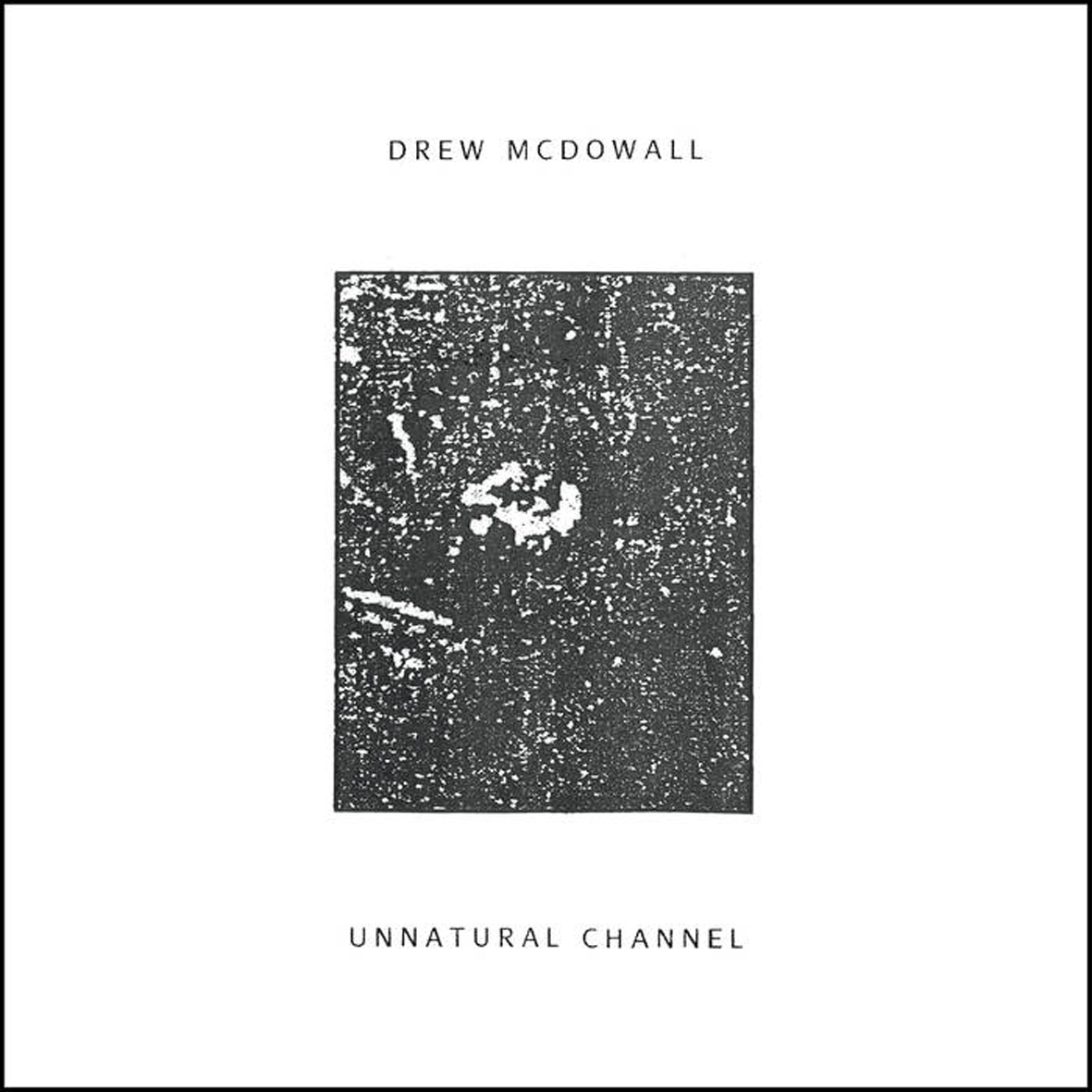 Drew McDowall’s second solo album for Dais is a bit of a surprise detour from 2015's more Coil-esque Collapse, largely abandoning the melodicism and eerie moods of its predecessor in favor of more fragmented and disorienting fare.  Many of these pieces ambiguously ride the line between bold evolution and perplexing regression, as McDowall's previously clear vision sounds broken and deconstructed into a miasma of lurching percussion, throbbing drones, and clattering metallic textures. As such, I had to re-calibrate my expectations a bit, but Unnatural Channel get points for taking chances and not going back to the same well a second time.  While I am not sure if Unnatural Channel comes at all close to realizing McDowall's potential, it is certainly an oft-compelling experiment, resembling a well-produced homage to the golden age of the noise/experimental cassette underground.
Drew McDowall’s second solo album for Dais is a bit of a surprise detour from 2015's more Coil-esque Collapse, largely abandoning the melodicism and eerie moods of its predecessor in favor of more fragmented and disorienting fare.  Many of these pieces ambiguously ride the line between bold evolution and perplexing regression, as McDowall's previously clear vision sounds broken and deconstructed into a miasma of lurching percussion, throbbing drones, and clattering metallic textures. As such, I had to re-calibrate my expectations a bit, but Unnatural Channel get points for taking chances and not going back to the same well a second time.  While I am not sure if Unnatural Channel comes at all close to realizing McDowall's potential, it is certainly an oft-compelling experiment, resembling a well-produced homage to the golden age of the noise/experimental cassette underground.
The opening "Tell Me The Name" initially starts the album on a deceptively subdued note, as the first minute or so is consumed with disjointed, cavernous, and brooding moans and a slow, erratic rhythm of electronic blurts, hollow clangs, and washes of hiss.  Gradually, the individual components of that pulse get closer together and cohere into a heavy, stumbling groove with viscerally pounding percussion.  Almost before I even realize what a cool trick McDowall has pulled off, however, the piece dissipates once more into fitful dark ambient abstraction.  To a large degree, that strange trajectory sets the tone for the whole album, as McDowall returns again to deep, heavy grooves weaved together from seemingly unrelated materials, but deems his work complete once he reaches that point and goes no further.  That aesthetic certainly has its appeal, as a piece like "Habitat" sounds menacing, futuristic, and inhuman.  However, it is quite a constrained vision to explore, causing much of Unnatural Channel to feel like slight variations on a single theme (though that theme admittedly sounds like it would be the perfect soundtrack for some kind of Terminator-esque mechanized apocalypse).
Naturally, the most memorable moments tend to be those where McDowall adds some twists or surprises to his "lumbering robotic menace" template.  One such highlight is "This is What It’s Like," which culminates in a creepy, insistent loop of Roxy Farman's voice whispering "this is what it’s like…sleep-deprived" over a clanging and shuddering march of buzzing electronics and metallic percussion.  Elsewhere, "Unnatural Channel (Part 2)" combines its crunching, stomping juggernaut of a groove with a fairly straightforward and melodic pulse to create a shambling and grotesque caricature of synthpop.  Wetware's Farman surfaces yet again on the all-too-brief closer "Unshielded," which conclusively steals the show with its deranged swirl of animal whoops, nerve-jangling chopped and overlapping vocal snatches, pounding low end, and snarls of grinding electronics.  It feels like a full-on nightmare set in some kind of cyberpunk jungle.  Also, in a perverse way, the extreme brevity is kind of an asset, as "Unshielded" packs a perfect visceral punch, then abruptly leaves me reeling and wondering what the hell just happened.
As with Collapse, Unnatural Channel feels like the work of an artist with a lot of great ideas that don't always translate into complete, fully formed songs.  It is hard to say whether or not McDowall has evolved as a composer since his debut, as strong melodic or harmonic motifs are in noticeably short supply here.  However, many of these songs have quite an inventive and deftly executed dynamic arc, even if the song always seems to quickly come to an end once the rabbit is out of the hat and the rhythm is fully established.  As a result, I cannot tell if Unnatural Channel is just a series of cool (if a bit baggy) modular synth jams that never went further or if we have instead entered McDowall’s bold new Percussion Phase.  Whichever it is, "Unshielded" is the current zenith of this direction, unleashing a wonderful and unhinged cacophony that starts at full power and ends long before it overstays its welcome.  Aside from that, Unnatural Channel is primarily enjoyable as just a feast of heavy industrial textures and inventive rhythms, resembling field recordings from a monstrous, rumbling factory floor in a bleakly dystopian and inhuman future.
 
Read More
- Administrator
- Albums and Singles
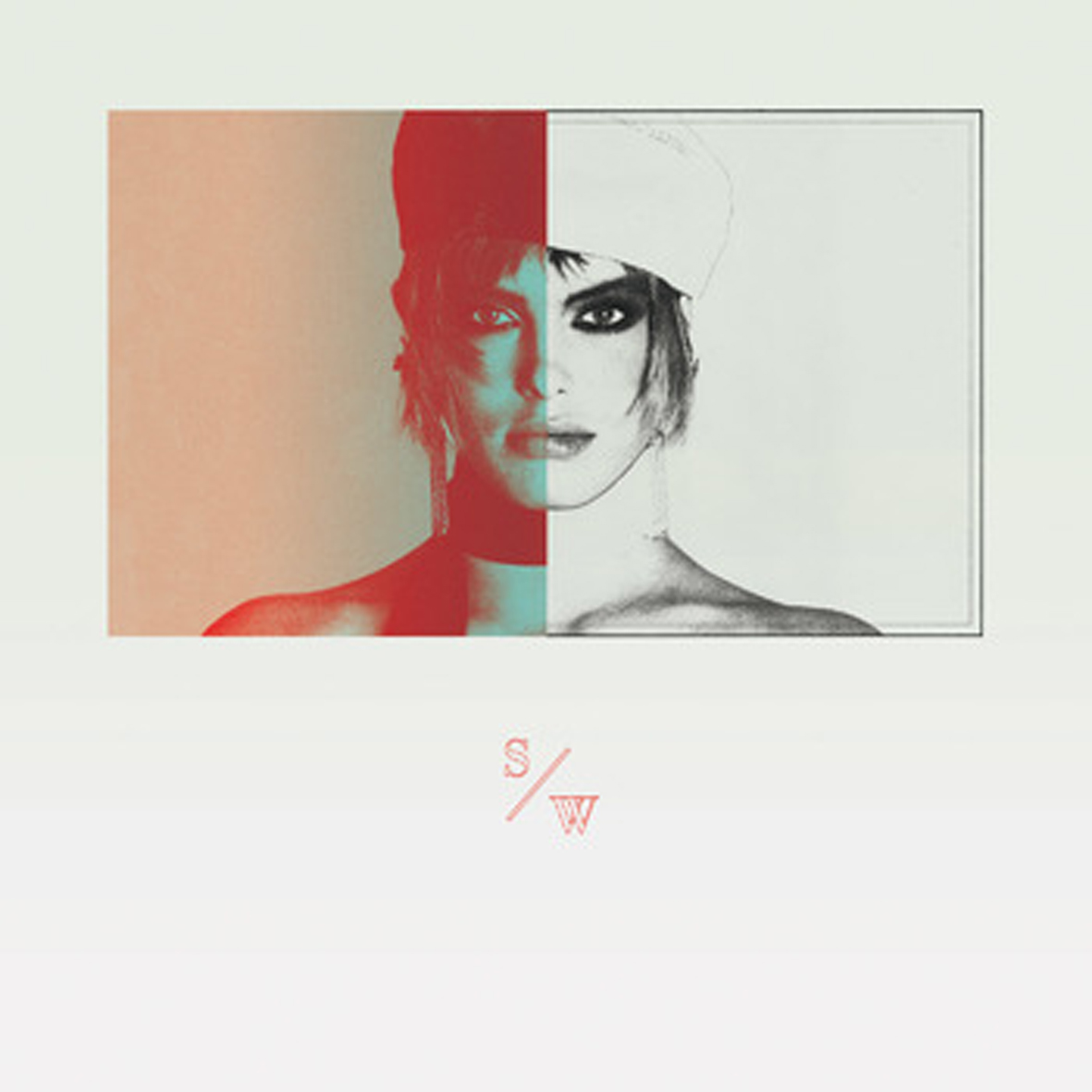 This innovative collaboration between Telefon Tel Aviv's Joshua Eustis and Belong's Turk Dietrich picks up right where the eponymous 2016 release left off, as the duo continue to gleefully pick apart and stretch minimal dub-techno into splintered unrecognizability.  As such, it would be quite a leap to describe S/W as dance music: all of the expected elements are present, but Second Woman reduce beats to skittering, stuttering abstraction.  The overall effect is quite a dynamically compelling one, ambitiously marrying an erratically sputtering and chopped-up synth haze with understated beats that seem equally inspired by skipping CDs, jackhammers, and ping-pong.  While some more hooks would certainly have been welcome, it is hard to grumble much about an album that sounds like it was sent from the future to show us what pop music for robots will be like.
This innovative collaboration between Telefon Tel Aviv's Joshua Eustis and Belong's Turk Dietrich picks up right where the eponymous 2016 release left off, as the duo continue to gleefully pick apart and stretch minimal dub-techno into splintered unrecognizability.  As such, it would be quite a leap to describe S/W as dance music: all of the expected elements are present, but Second Woman reduce beats to skittering, stuttering abstraction.  The overall effect is quite a dynamically compelling one, ambitiously marrying an erratically sputtering and chopped-up synth haze with understated beats that seem equally inspired by skipping CDs, jackhammers, and ping-pong.  While some more hooks would certainly have been welcome, it is hard to grumble much about an album that sounds like it was sent from the future to show us what pop music for robots will be like.
The opening "/" is probably the clearest possible statement of intent that Second Woman could have possibly made, as it begins with an unadorned kick drum thump that gradually increases in speed until it is almost a blur, then reverses course and slows back down to its original pace.  In essence, that repeating pattern is the entire song, though it is subtly fleshed-out by a bit of subdued synth shimmer.  While it is not an aberration by any means, it is probably the most extreme example of Second Woman's hyper-minimalist bent on the album, throwing down the gauntlet immediately to make it clear that S/W is first and foremost a playground for unusual percussion experiments.  That aggressively purist aesthetic admittedly softens a bit for the following "//," as Dietrich and Eustis enhance their scuttling and alternately expanding and contracting kick drum motif with a repeating reverberant chord, but it is still clear that the music is secondary and the erratic wanderings of the bass drum thump are the true focus.  While a lot of what follows can essentially be viewed as just a series of jackhammering bass drum variations, Second Woman tweak that simple formula more and more dramatically with each successive piece, giving the first half of the album an arc of nervous, snowballing intensity.  For example, "///" is the first piece to actually include chord changes, as well as the first to transform the ping-ponging thump into something resembling a fully formed groove with an off-kilter clapping rhythm.  The following "////" goes further still, bringing a stuttering, broken sounding chord progression to the foreground along with a ghostly and indistinct vocal sample.
Regardless of the shape the music takes, the overall effect is like watching two magicians obsessively repeating the same trick over and over again.  Admittedly, their feat is quite a good one, as these pieces simultaneously achieve a relentless industrial precision and a tense sense of being precarious and a little bit out of control: the erratic and conclusively undanceable tempo of the bass drum makes it feel like the entire pristine edifice is built upon shifting sands.  Despite my appreciation for that unconventional aesthetic, however, the sheer monomania of S/W can be a bit wearying.  Consequently, I was relieved when the second half of the album took an unexpected turn and alternately dismantled further or rebuilt Second Woman's deconstructed vision, a transformation mirrored by the odd symmetry of the cryptic track numbering system.  "////\" is the first piece to explore this slightly different side, dispensing entirely with percussion in favor of an oscillating and shuddering series of warm synth chords.  It is certainly no less obsessive-sounding than its predecessors, but it has quite a different feel.  Then the following "////\\" does the most unimaginable thing possible, locking into an actual groove with a bass line and consistent beat, though it still feels more like a simple vamp than an actual song.  Unsurprisingly, the ping-ponging drums return for the manic "////\\\," but the piece unexpectedly gives way to a series of weirdly melancholy and throbbing drones at the end, which is probably the first glimpse of human emotion on the entire album.
Second Woman save their best for (almost) last, however, as the penultimate "////\\\\" is a gorgeous eruption of all the S/W's pent-up and simmering potential, basically lighting up the album like a goddamn fireworks display.  All the expected components are still in place, but the wildly careening percussion locks into a groove with actual forward momentum, adding and subtracting elements in a way that feels genuinely songlike.  Or at least close to it: it feels more like a wild drum solo unleashed by a computer with an intuitive dynamic knack for build-ups and breakdowns, but it does culminate in a crescendo where the ricocheting percussion is viscerally strafed by gnarled streaks of textured synths.  Curiously, the final piece ("////\\\\/") takes an extremely anticlimactic turn after that firestorm, blearily drifting along for almost five minutes in a haze of plinking, disjointed percussion; seasick synth tones; and jarring alarm-bell disruptions.  That makes for a very odd and perplexing final impression, but S/W is a very odd and perplexing album, so I suppose that makes perverse sense.  Aside from "////\\\\," which is a legitimate tour de force, this album is far too one-dimensional and willfully bloodless to love.  That said, it is an album that I very much respect, as Second Woman unwaveringly display clear vision, rigorous focus, and crystalline clarity.  It would have been easy to make a more listenable album by adding a bit more in the way of warmth, depth, melody, or harmony, but Dietrich and Eustis took the harder route and achieved some rarefied and hard-won moments of singular and alien machine-music beauty instead.
 
 
Read More
- Administrator
- Albums and Singles

Jessica Moss is best known as violinist, backing vocalist and co-composer with the acclaimed cult chamber-punk band Thee Silver Mt. Zion Memorial Orchestra, the avant-klezmer group Black Ox Orkestar, and for her involvement in multiple records by Carla Bozulich’s Evangelista and two albums by Vic Chesnutt.
Having made six full-length albums and toured extensively with Mt. Zion from 2001-2014, Moss began performing solo work two years ago as that band went on hiatus, leading to mesmerizing solo appearances at ATP Festival, Le Guess Who? Festival, the Basilica Hudson 24-Hour Drone, the Winnipeg New Music Festival and the Montréal Museum of Contemporary Art, among others. Pools Of Light is her first full-length solo album, following the 2015 self-released cassette Under Plastic Island (recorded with Guy Picciotto of Fugazi).
As fans of the aforementioned projects will know, Moss has developed a distinctive and impressive approach to violin that combines a natural technical fluidity, a recombinant command of folk, classical and modern idioms, and an adventurous exploration of signal-bending and analog effects that uniquely expand the spectrum of the violin as sound source. Her solo work is deeply rooted in live performance, where she builds up and breaks down stunning longform compositions in real time with an array of pedals – including distortions, octave/harmonizers and samplers/loopers. To hear all of this brilliantly rallied and unfolded on a wholly solo recording (without reliance on software-based dubbing or effects) is intensely rewarding.
Comprised of two side-length multi-movement compositions, Pools Of Light unfolds at a stately, inexorable pace, combining sound-art and signal-processed timbres, extended melodic and contrapuntal lines, and the periodic deployment of stark, minimalist vocals. "Entire Populations" is a 24-minute tour de force on Side One, opening with gently blown-out solo violin layering a maqam- and klezmer-inflected theme that gradually recedes to near-silence as vocals are introduced, with Moss singing a single phrase (anchored by the song’s title) which builds up anew in careening stacked vocal loops, towards a majestic juxtaposition of dive-bombing electronics and strident melodic string excursions, ending in a tender scorched-earth denouement. "Glaciers I" and "Glaciers II" on Side Two are more explicitly textural and cinematic, moving between minimalist and maximalist, widescreen and intimate, ice and heat; a highly compelling suite of drone-inflected, nuanced and subtly plaintive instrumental pieces.
Pools Of Light is elegiac durational music at the intersection of neo-classicism, soundtrack, electronic, art-punk and avant-folk – a decidedly organic, non-academic, profoundly searching and emotive work, guided by Moss’s liner note mantra: "FEELING LOVE IN A MELTING WORLD."
More information can be found here.
Read More

